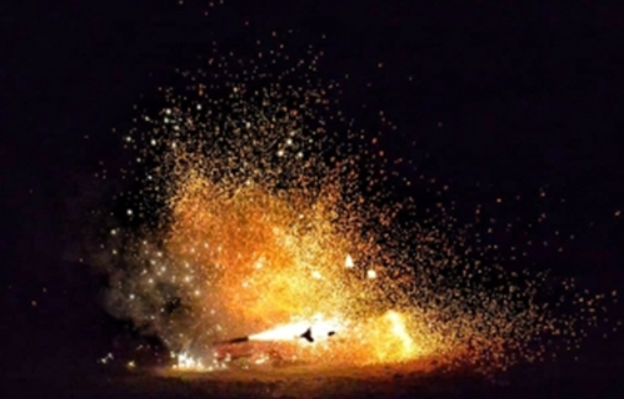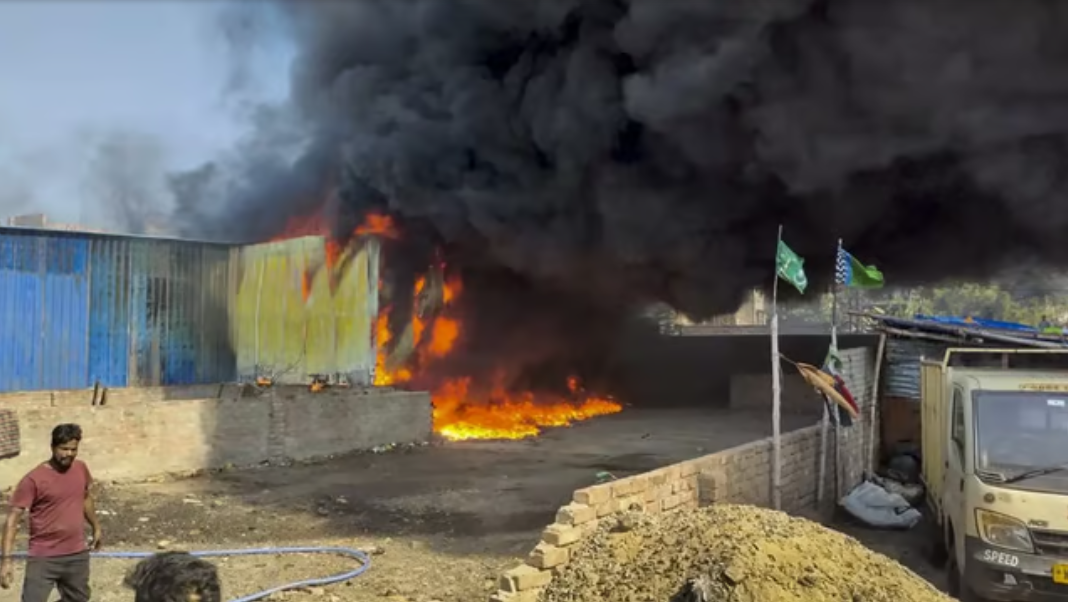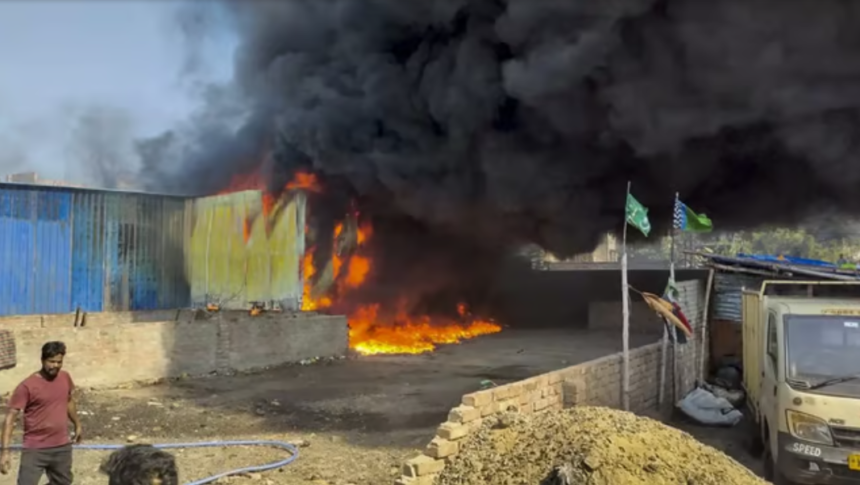Nagpur Firecracker Factory Blast:-
Nagpur Firecracker In the early hours of a seemingly ordinary day, tragedy struck the city of Nagpur. A catastrophic explosion at a firecracker factory not only shook the ground but also the hearts of many, leaving a devastating impact on the community. The death toll from this horrific incident has now risen to eight, with many more injured, some critically. This disaster has left an indelible mark on the lives of those affected and raises serious concerns about safety regulations and enforcement in the industry.
The Incident Unfolds
The Nagpur Firecracker blast occurred on the morning of June 15, 2024, at a firecracker manufacturing unit located on the outskirts of Nagpur. Witnesses reported a deafening explosion, followed by a massive fire that engulfed the factory premises. The intensity of the blast was such that it shattered windows of nearby buildings and was heard several kilometers away. Panic and chaos ensued as workers and local residents rushed to the site, only to be met with a scene of utter devastation.
Emergency services were quick to respond, with fire brigades, ambulances, and police teams arriving promptly. Despite their swift action, the flames took hours to be brought under control due to the highly flammable materials stored in the factory. The rescue operations continued well into the night as firefighters and rescue workers combed through the debris, searching for survivors.
Victims and Their Stories
Nagpur Firecracker As the smoke cleared, the true scale of the tragedy became evident. Eight lives were lost in the explosion, each with their own story and dreams abruptly cut short. Among the victims was 32-year-old Rajesh Kumar, a father of two who had been working at the factory for over a decade. Known for his dedication and hard work, Rajesh’s untimely death has left his family in a state of shock and grief. His wife, Meena, tearfully recounted how Rajesh had always been concerned about the safety standards at the factory but continued working there to provide for his family.
Another victim, Sunita Devi, was just 22 years old and had recently joined the factory. Her family described her as a vibrant and ambitious young woman, full of hopes and aspirations. Sunita’s parents are inconsolable, struggling to come to terms with the loss of their beloved daughter.
These personal tragedies highlight the human cost of industrial accidents and the need for stringent safety measures to prevent such occurrences in the future.  for more information click on this link
for more information click on this link
The Injured and Medical Response
Nagpur Firecracker In addition to the fatalities, the blast injured over a dozen people, some of whom are in critical condition. Local hospitals were overwhelmed with burn victims and those suffering from severe injuries caused by the explosion and subsequent fire. The medical teams have been working tirelessly to provide the best possible care to the injured, with some patients requiring specialized treatment in burn units.
Dr. Anjali Sharma, a senior surgeon at Nagpur General Hospital, described the harrowing scenes in the emergency room. “We are dealing with a large number of patients with extensive burns and trauma injuries. Our priority is to stabilize them and prevent infections. The next few days will be critical for many of them,” she explained.
Community Response and Solidarity
The Nagpur community has come together in the wake of the tragedy, demonstrating remarkable solidarity and support for the victims and their families. Local NGOs and volunteer groups have been providing food, clothing, and financial assistance to those affected. Blood donation drives have been organized to ensure an adequate supply for the injured, and counseling services are being offered to help families cope with their grief and trauma.
Nagpur Firecracker One local resident, Amit Verma, who lives near the factory, shared how he and his neighbors rushed to the site to assist in the rescue efforts. “It was a horrifying scene, but we had to help. We pulled out as many people as we could and did whatever we could until the emergency services arrived,” he said.
Safety Concerns and Regulatory Failures
This tragic incident has cast a harsh spotlight on the firecracker manufacturing industry, which has long been plagued by safety issues. The factory where the explosion occurred is now under scrutiny for potential regulatory violations and lapses in safety protocols. Initial investigations suggest that improper storage of flammable materials and lack of adequate fire safety measures might have contributed to the severity of the explosion.
Firecracker factories in India have a notorious history of accidents, often due to inadequate safety standards and poor enforcement of existing regulations. The Nagpur blast has once again raised questions about the effectiveness of the regulatory framework governing these factories. Are the existing laws sufficient? Are they being enforced rigorously? These are questions that need urgent answers to prevent future tragedies.  for more information click on this link
for more information click on this link
Government and Legal Response
In the aftermath of the explosion, local authorities have launched a thorough investigation to determine the cause of the blast and identify any lapses in safety protocols. The factory owner has been detained for questioning, and legal action is expected to follow based on the investigation’s findings. Maharashtra Chief Minister Eknath Shinde visited the site and met with the victims’ families, assuring them of full support and promising stringent action against those responsible.
“We will leave no stone unturned in our investigation. Those found guilty of negligence will face severe consequences. We must ensure that such a tragedy never happens again,” said Chief Minister Shinde in a statement.
Calls for Reform and the Way Forward
The Nagpur firecracker factory blast is a wake-up call for the industry and the authorities. There is an urgent need for comprehensive reforms to enhance safety standards and enforcement mechanisms. This includes regular inspections, mandatory safety training for workers, proper storage facilities for flammable materials, and strict adherence to fire safety protocols.
Experts also advocate for the introduction of modern technologies and automation in firecracker manufacturing to minimize human involvement and reduce the risk of accidents. Enhanced safety measures, combined with stricter regulatory oversight, could significantly mitigate the risks associated with this hazardous industry.
Public Awareness and Advocacy
Public awareness campaigns are essential to educate factory owners and workers about the importance of safety measures. NGOs and civil society organizations can play a crucial role in advocating for better working conditions and pushing for policy changes. By creating a culture of safety and accountability, the likelihood of such disasters can be greatly reduced.
The Nagpur tragedy has spurred conversations and debates across the nation, with many calling for a complete overhaul of safety regulations in the firecracker industry. The voices of the victims and their families must be heard, and their plight should catalyze meaningful change.
Conclusion: A Tragic Reminder
The explosion at the Nagpur firecracker factory is a tragic reminder of the perils faced by workers in hazardous industries. As the death toll rises to eight, the focus must be on providing support to the affected families, ensuring proper medical care for the injured, and holding those responsible accountable. However, beyond immediate relief, there is a pressing need for systemic changes to prevent such disasters in the future.
The pain and loss experienced by the victims’ families underscore the human cost of industrial negligence. It is a stark reminder that safety should never be compromised, and the lives of workers should always be prioritized over profit. As Nagpur mourns its loss, the hope is that this tragedy will lead to lasting reforms and a safer working environment for all. ALSO READ:- Veteran Sports Journalist Harpal Singh Passes Away: An Irreplaceable Loss to Sports Journalism 2024





